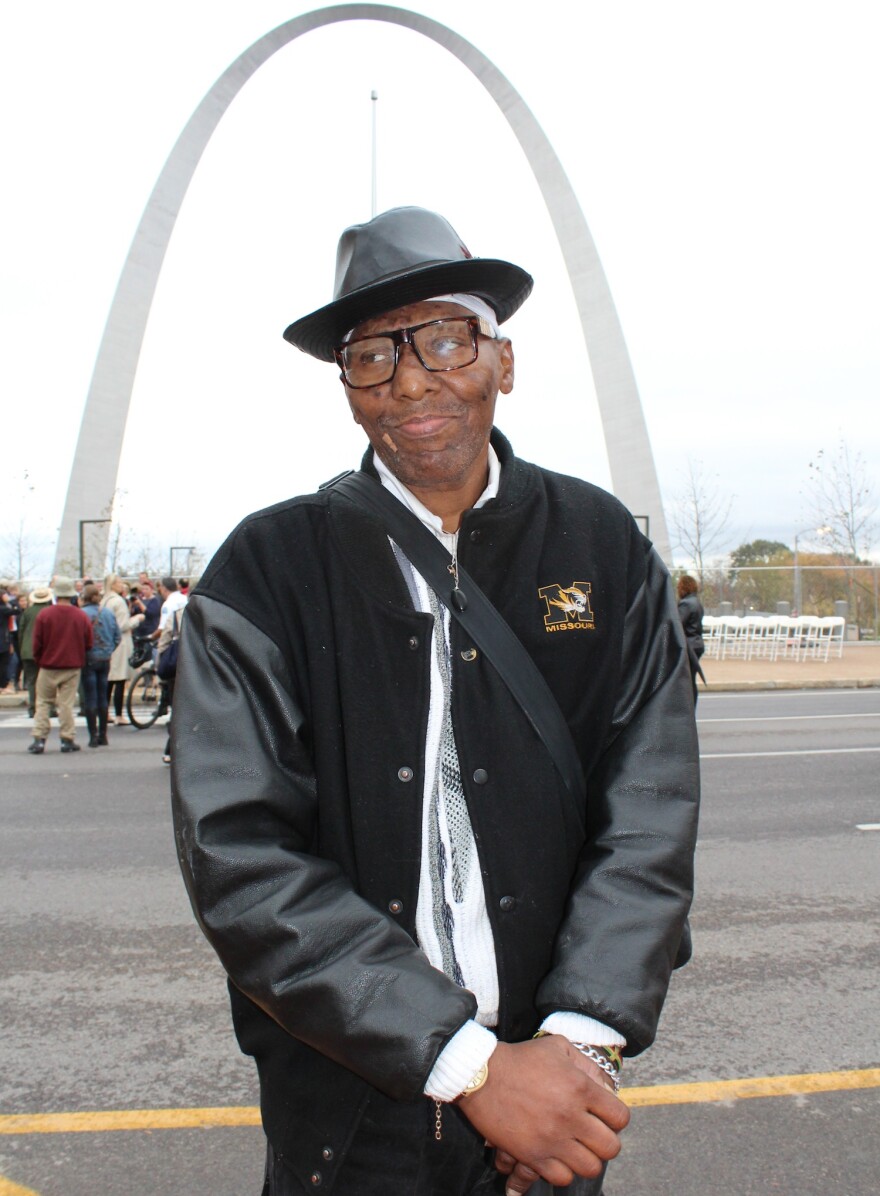Hundreds of St. Louis residents, civic leaders and Jefferson National Park officials watched Wednesday as firefighters struck a large golden bell five times, once for each decade of the Gateway Arch's lifespan. The ceremony marked the day in 1965 that the final piece of the Arch was put in place.
Randy Mersch watched from the east steps of the Old Courthouse – the exact same spot he stood with his father 50 years ago as construction workers struggled to place the Arch’s centerpiece.
“It took quite a while for that to happen because it was a warm day, so they had a problem with the Arch kind of contracting, and they had to pry the two legs apart to get the centerpiece in,” Mersch said. “But we were patient and we actually got to see it happen.”
Mersch brought his daughter Catherine to the ceremony.
“I’m very excited to be here,” she said. “I’m really glad I got to come. It’s like a family tradition now that I get to be here with my dad since he was here 50 years ago with his dad.”
Mersch was just one of many witnesses to the Arch’s completion 50 years ago who returned to the site Wednesday, including three men who were part of the Boy Scout troop that raised the U.S. flag at the inauguration ceremony in 1965. Wednesday, they returned to raise the flag again. They were joined by a new generation of Boy Scouts, including Eric O'Neal.
"I was really nervous but it was also cool at the same time," O'Neal said. "It was pretty fun doing it. I'm definitely coming back to visit the Arch."
The anniversary celebrations began before sunrise, when officials illuminated the Arch with gold light. Volunteers later formed a “Human 50” inside the courthouse rotunda, and the commemoration ceremony closed with a performance by an Air Force brass quintet and free cupcakes. Meanwhile about 30 sheet-metal and iron workers, engineers and electricians who had a hand in building the Arch spent the morning speaking about their construction experiences. They signed posters, plastic hard-hats and reprints of newspapers from the day the Arch was completed.

Darrell Dugger spent his childhood summers watching that group at work, when his uncle would pack the kids into a station wagon to drive downtown and pick up his aunt from her job at a hotel on 7th Street. Dugger and his cousins played by the riverfront and watched the construction workers hundreds of feet above.
“Most families used to come down to the riverfront during the summer, so we got to play with kids from other neighborhoods and watch the Arch being built at the same time,” Dugger said. “It was a fun thing to see them working on it at night with all the lights around it. It’s a beautiful piece of work. If you ever get lost just come across the bridge and look for the big ol’ Arch.”
Attendees of the ceremony weren’t just St. Louis residents. Peter Filichia flew from his native New York City to honor the monument he first saw in 1988. Then 42 years old, Filichia, a theater critic, was in St. Louis to review shows at The Repertory Theatre when he passed by the Arch.
“I never expected to be so impressed by it,” he said. “But once I got a look at this I was really quite amazed. Ironically enough, when I went up in the Arch, I was very disappointed because it was the only place nearby I couldn’t see the Arch anymore. It was never a question whether or not I would spend the money to be here today."

Filichia planned for the trip back in February and reserved a room in the Hyatt Regency Hotel so he could have a view of the Arch. He said his one complaint was the construction surrounding the monument. Jefferson National Park, the 100 acres of ground the Arch is in, is currently under renovation. The multimillion dollar project is expected to be completed by spring 2017.
At the ceremony, Mayor Francis Slay, who was 10 years old when he watched workers set the Arch’s final piece in place, said the monument’s anniversary stood as a challenge to build a better future.
“The Arch is indeed a symbol of our region’s strength, of our civic pride,” Slay said. “A symbol of our commitment to ourselves and to our future. On this day, 50 years after it was constructed, it challenges us to think ahead for the next 50 years.”






